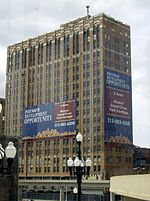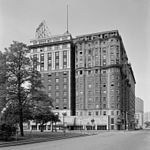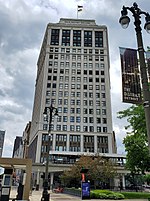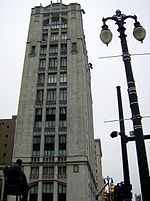Detroit Statler Hotel
1915 establishments in Michigan1975 disestablishments in MichiganBuildings and structures demolished in 2005Defunct hotels in the United StatesDemolished buildings and structures in Detroit ... and 6 more
Demolished hotels in the United StatesDowntown DetroitGeorge B. Post buildingsHotel buildings completed in 1915Skyscraper hotels in DetroitUse mdy dates from November 2022
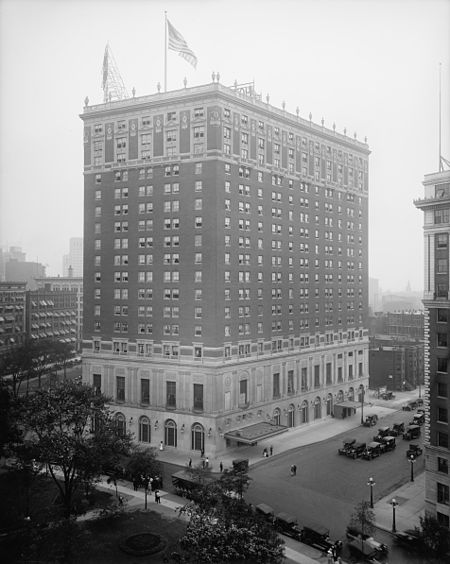
The Detroit Statler Hotel (also known as the Detroit Hilton Hotel) was a building located at 1539 Washington Boulevard across from Grand Circus Park between the David Whitney Building and the Hotel Tuller in Downtown Detroit, Michigan. In addition to Washington Boulevard, the hotel also fronted Bagley Street and Park Avenue.
Excerpt from the Wikipedia article Detroit Statler Hotel (License: CC BY-SA 3.0, Authors, Images).Detroit Statler Hotel
Park Avenue, Detroit
Geographical coordinates (GPS) Address Nearby Places Show on map
Geographical coordinates (GPS)
| Latitude | Longitude |
|---|---|
| N 42.33542 ° | E -83.05159 ° |
Address
City Club Apartments CBD Detroit
Park Avenue 313
48226 Detroit
Michigan, United States
Open on Google Maps
